

Tireces
gamer level 5
4004 xp
4004 xp
followers
13
13
Use my invite URL to register (this will give me kudos)
https://boardgaming.com/register/?invited_by=tireces
profile badges




recent achievements

I Walk the Talk!
Claim that you have played a game today by clicking the "Played Today!" button on a game page 100 times.
Claim that you have played a game today by clicking the "Played Today!" button on a game page 100 times.

Novice Reviewer
Review 5 games and receive a total of 140 positive review ratings.
Review 5 games and receive a total of 140 positive review ratings.

Gamer - Level 5
Earn Gamer XP to level up!
Earn Gamer XP to level up!

I Love Playin' Games
Claim that you have played a game today by clicking the "Played Today!" button on a game page 50 times.
Claim that you have played a game today by clicking the "Played Today!" button on a game page 50 times.






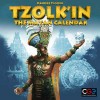





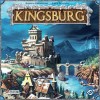

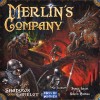
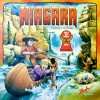

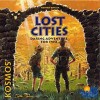

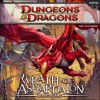









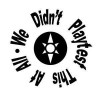





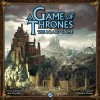

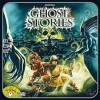







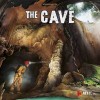

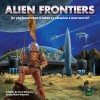




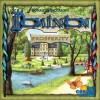
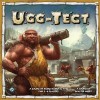

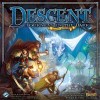


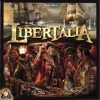









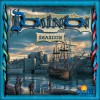


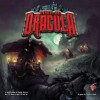



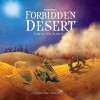
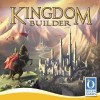


Niagara
Most board games attempt to wrap their game mechanics in a theme possessing some degree of verisimilitude. Build a town, feed your tribe, power your cities — these things exist in some form in the real world. Then you have Niagara, where you race opponents to the abyssal edge of a waterfall to wrangle up valuable gems and return them to the goal line. With the specific, controlled environment and contrived system of rules designed to inspire competitive fun, Niagara sounds like a sport. So there you go. Think of Niagara as a board-game version of a sport that does not exist.
Gameplay
Each player starts the game with a hand of the same 7 paddle tiles and 2 canoes docked upriver from the waterfall. You play paddle tiles to float your canoes downriver, pick up gems from riverside gem sites, and paddle back to the docking area, with the goal of collecting specific sets of gems.
Each round, everyone simultaneously chooses a paddle and sets it on the board facedown. On your turn, you reveal your facedown paddle and move your canoe(s) the number of spaces on the paddle. You can also spend some of your paddle points to pick up gems from gem sites, or drop off gems to free up space in your canoes. Once everyone has played a paddle, the river and any canoes on it shift a number of spaces downstream toward the falls.
At the end of each round, all the paddles played that round are discarded facedown, meaning on subsequent rounds you have fewer paddle tiles in your hand to choose from. And at some point in the game, you may find your canoes nearing the waterfall, fighting an increasingly powerful current without the tiles you need to paddle to safety upriver. If your canoes go over the falls, you lose them — and any gems they were carrying. You can spend gems to replace your canoes, but recovering from the setback will prove challenging.
Collecting gems and avoiding the falls may seem simplistic except for two things. First, under certain circumstances you can steal gems from opponents’ canoes while they are still on the river. Second, when canoes on the river shift downstream in the river phase, the current flows based on the lowest paddle played. By observing canoe positions and keeping a mental tab of which paddles opponents have played, you can position your own canoes to steal opponents’ gems or play a timely high-value paddle on the same turn as everyone else to flush a few boats over the falls.
Winning
To win, be the first to collect a complete set of gems: either 5 different colored gems, 4 gems of the same color, or 7 gems of any combination of colors.
Smart opponents will each take a share of the closest gems, preventing an easy 4-gem victory. Fighting for 5 colors will usually be your best bet, then, but 2 of the colors lie at gem sites skirting the very precipice of the falls. Instead of risking your own boats for those hard-to-reach gems, you could let your opponents do it … and then steal the gems out from under them just before they reach the docks.
Theme
What is gem wrangling? The theme of Niagara. What is Niagara? The game of gem wrangling. Niagara totally lacks any real-life approximation of its theme, which means the game is the theme. The rules fit perfectly because the game is the theme. The setting fits perfectly because the game is the theme.
Components
Niagara’s game board is a river. You set the board on top of the box, and the waterfall portion hangs over the edge. Plastic discs represent the river spaces. You set the discs on the river, and when the river “flows”, you physically push the rear-most disc which pushes all the discs in front of it down the river and over the falls. Neat!
The game board’s river is smartly lined with an extra thick layer of cardboard so the river discs do not slide out of the river section when you push them. Durable plastic river discs and sturdy wooden canoes will survive any number of plunges over the falls. Heavy cardboard paddle tiles and acrylic gems round out the high-quality components, although one wishes distinguishing the different colors of semi-transparent gems was easier.
Pros:
+ Watching imperiled canoes spill over the falls and clatter across the table can be uniquely, tactilely satisfying.
+ Memorizing which paddles opponents have played pays off when you steal their gems or force their canoes over the falls.
+ Rules and components are tailored to the unique theme.
+ Short play time and simultaneous paddle selection will not strain your attention span.
Cons:
– Supernumerary rules for canoe movement may send you digging through the poorly designed manual frequently to resolve rule questions.
– Distinguishing the colors of the semi-transparent gems proves unreasonably difficult for a game based around tracking which colors of gem your opponents are collecting.
– Limited victory conditions leave little replay value.